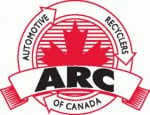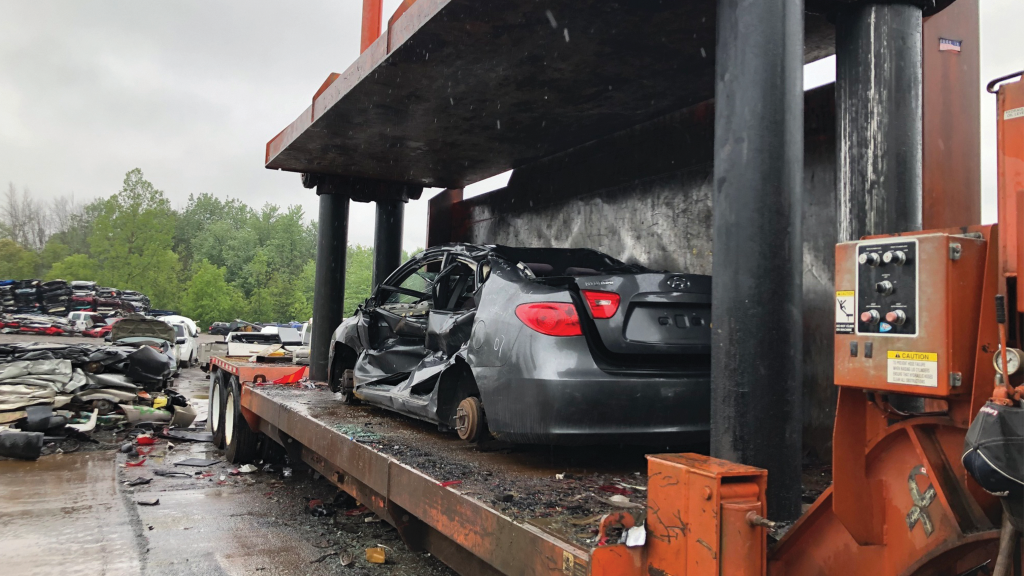The road to auto plastic recovery: recommendations for recycling plastics from end-of-life vehicles

Late in 2021, the Automotive Recyclers of Canada (ARC) was retained by Environment & Climate Change Canada (ECCC) to study the current practices related to the recovery of auto plastics from end-of-life vehicles (ELVs) in Canada. The purpose of the study was to develop a potential road map to contribute to Canada's 2030 target of zero plastic waste.
In 2019, a plastics report produced by Deloitte and Cheminfo Services estimated that the auto sector produces approximately 309,000 tonnes of plastic waste annually, about 9 percent of the total amount of plastic waste worldwide. This represents the second largest sectoral producer of plastic waste after plastic packaging, which accounts for 47 percent of all plastic waste.
About 1.6 million vehicles are retired annually in Canada, and each of these ELVs contain about 175 kg of various plastic resins. Recycling rates for the plastics in ELVs tend to be low since there are very few end markets for these materials. Plastics from ELVs are often contaminated with other plastics and metal components, and there are not currently technologies capable of recycling all of the different plastic and multi-resin parts found in vehicles.
Surveying key players
An online survey was sent out to 500 auto recyclers, shredders, and scrap buyers across Canada and was then followed up by phone interviews with a wide variety of auto recyclers – both those filling out the survey, and those targeted because of their large presence in the sector.
Suggestions collected from the survey on how the Government of Canada could facilitate an increase in auto plastic recycling included:
- Providing bins for plastic collection at each auto recycling site;
- Creating end markets for auto plastics;
- Providing shredders to shred collected plastic to reduce the volume before transportation;
- Better labelling of auto plastics for easy identification of plastic resin;
- Providing regional shredders;
- Creating regional processing facilities;
- Providing a bounty to recover labour and full costs for removing marketable auto plastics;
- Identifying types of plastic that are reusable/recyclable and pay per piece recovered; and
- Providing funding to transport auto plastics to recyclers.
In late January 2022, a teardown study was carried out at Standard Auto Wreckers in Port Hope, Ontario, on five vehicles that represent the most popular vehicles in the Canadian market. The goal was to measure the amount of time required to extract different plastics from ELVs as part of both the auto parts harvesting process and regular de-pollution.
The teardown study concluded that it was extremely expensive to recover auto plastics at this stage in the value chain. The average measured rate of plastics removal was 28 kg per hour, meaning it would take approximately 34 hours to remove one tonne of plastic from ELVs at an estimated cost of $3,400 per tonne. While this is not considered a realistic or economically viable approach, a few specific actions hold promise.
Two industrial plastics recyclers took samples from the teardown study to explore technical options for recycling. University researchers active in plastics recycling research were contacted to determine their level of interest in exploring technologies to process mixed plastics from the teardown/time in motion study. Some of these are considered promising partners for the next phase of the research.
ARC road map recommendations
The ARC road map recommended a three-year research program potentially diverting over 83,000 tonnes of auto plastics from landfills with a total estimated budget of around $6,340,000.
The six elements of the research program are:
- Develop an auto plastics database: The ARC auto plastics road map research study identified a serious lack of data on the plastic resins and composites used for various auto components in different makes, models, and years of vehicle. This information is needed for long-term program planning and evaluation. Development of an auto plastic database would provide the data needed to evaluate program performance, as well as for longer term program planning.
- Collision repair sector research: Research for the ARC auto plastics road map identified that the collision repair sector could potentially be a promising location where auto plastics could be recovered for recycling. A research project is proposed to quantify the potential opportunity.
- Bumper recycling enhancement: Research showed that bumpers are made of TPO which is a recyclable plastic resin. Some bumper recycling activity is already underway in Canada. Bumpers are easily removed from most - but not all - end-of-life vehicles, therefore minimizing labour costs. The proposed enhancement program would provide a bounty to auto recyclers and potentially collision repair locations to encourage auto recyclers to remove and store bumpers separately for collection and recycling.
- Gas tank recycling: Most gas tanks in Canada are made of a combination of plastics. Gas tanks are a good target to increase the recycling of auto plastics as they need to be removed from vehicles regardless as part of de-pollution. The challenge is that technologies are not yet available to recycle the combination of plastic materials used in gas tanks, which also contain gasoline residues. This research project would support technology development to explore and establish end markets for gas tanks, eventually leading to a gas tank recycling program.
- Mixed auto waste plastics research and development: The study identified a reasonable opportunity to separately collect all auto plastic removed from a vehicle during the regular process of parts harvesting at auto recycler sites. However, the recovered plastic is a mixture of plastic resins for which markets are not currently available. This research project would support technology developments to establish end markets for collected mixed plastic from auto recyclers.
- Enhancing the recycling of vehicle lights: Vehicle lights are readily accessible in EOL vehicles and contain valuable plastic resins, but it is time consuming to dismantle the lights into separate plastics for recycling. A research program is suggested which could lead to a bounty program if it is determined that this approach is economically viable.
The ARC road map looked at the recovery of plastics pre-shredder. As all ELVs are eventually shredded to recover the valuable metals, this leaves behind a mixed waste stream of which plastics represent about 40 percent. The recovery of auto plastics from auto shredder residue is in the early stages of development, but offers a promising route for Canada to recover auto plastics.
A circular economy for auto plastics
In addition to the hands-on elements of the road map, six actions were recommended to move Canada forward toward a circular economy for auto plastics:
Action #1: Clarify the federal government and CCME's plans and actions to achieve zero plastic waste by 2030.
Action #2: Engage the Canadian automotive industry to become leaders in policies, plans, and actions to increase automotive plastics reuse, recycling, and recovery, and to reduce overall automotive plastic waste generation.
Action #3: Measure and track reliable data on current auto plastic waste generation, reuse, recycling, and auto plastics waste diversion.
Action #4: Establish a multi-stakeholder body to focus on automotive plastics and other aftermarket critical issues.
Action #5: Investments in auto plastics reuse/recycling innovations, collection and processing infrastructure, and skills training are critically needed.
Action #6: The Canadian and global automotive sector is undergoing profound and positive changes. The shift toward electric vehicles presents a unique opportunity to design new EV products with a "design for environment" mindset, allowing for easier removal of plastics with repair, reuse, and recycling in mind.
Steve Fletcher is the managing director of the Automotive Recyclers of Canada (ARC) association.



